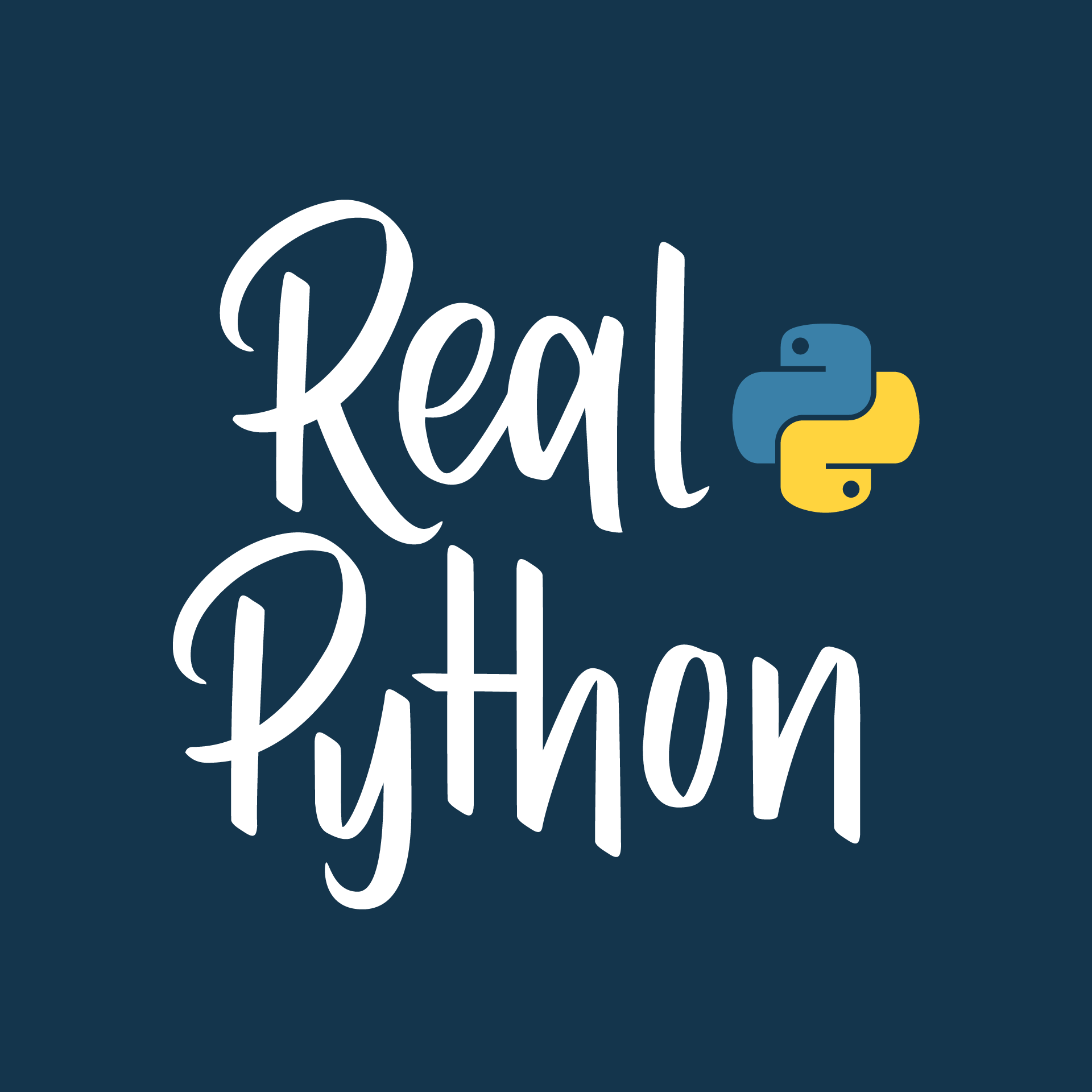

The Real Python Podcast
Real Python
A weekly Python podcast hosted by Christopher Bailey with interviews, coding tips, and conversation with guests from the Python community.
The show covers a wide range of topics including Python programming best practices, career tips, and related software development topics. Join us every Friday morning to hear what's new in the world of Python programming and become a more effective Pythonista.
The show covers a wide range of topics including Python programming best practices, career tips, and related software development topics. Join us every Friday morning to hear what's new in the world of Python programming and become a more effective Pythonista.
Episodes
Mentioned books

Jan 12, 2024 • 54min
Serializing Data With Python & Underscore Naming Conventions
Explore the different ways to serialize data in Python beyond XML and JSON. Learn about naming conventions in Python and how to avoid name clashes with keywords. Discover how to build a custom REPL in Python and override the default behavior. Dive into the comprehensive resource on serialization in Python, covering different methods and considerations. Gain insights into the importance of balancing quality and shipping in software development. Hear about frustration with project setups and learn about 'flask muck', a well-documented project for generating RESTful APIs. Finally, discover NH3, a Python wrapper for the ammonia tool, a replacement for the deprecated HTML sanitizer bleach.

25 snips
Jan 5, 2024 • 1h 14min
Exploring Python in Excel
Principal Architect John Lam and Sr. Cloud Developer Advocate Sarah Kaiser from Microsoft discuss the journey of adding Python to Excel. They explore data science workflows, interactive visualizations, and resources to learn more. The podcast also touches on the benefits of Python in Excel and the importance of team assembly and security. Additionally, they discuss possibilities in Python with Rust and advancements in AI.

5 snips
Dec 29, 2023 • 53min
2023 Real Python Tutorial & Video Course Wrap-Up
Three members of the Real Python team, Kate Finegan, Tappan Moore, and Philipp Acsany, discuss their year-end wrap-up of tutorials, projects, and video courses. They highlight onboarding new writers and video instructors, the 'Recursion in Python' video course, and various topics including building a Wordle clone with Python and Rich, Python classes, and sorting Unicode strings. They also mention their excitement for future content on the Real Python Podcast.

14 snips
Dec 22, 2023 • 38min
PyCoder's Weekly 2023 Wrap Up
Python trends of 2023: removing dead batteries from the standard library, speeding up Python, using Rust code in libraries, and moving away from microservices. Recent releases include Python 3.13 alpha 2, Django 5, and Ninja 1.0. Also discussed: JavaScript library, Python video course on object-oriented programming, Mojo programming language for Python's performance in machine learning and AI, and microservices trend with Kraken Technologies' approach to Python monolith structuring.

23 snips
Dec 8, 2023 • 1h 6min
Exploring Code Reviews in Python and Automating the Process
The podcast explores code reviews in Python, discussing the experiences of developers in different organizations and the importance of constructive feedback. They also delve into the benefits of coding tools like co-pilot for code review and the potential of AI in code development. Additionally, the podcast highlights the impact of code assistance tools on code development and explores developments in Python and AI. The speakers also discuss their website, social media presence, and future plans.

Dec 1, 2023 • 57min
Building a Python JSON Parser & Discussing Ideas for PEPs
Python language enhancement ideas discussed including simplifying keyword arguments syntax and returning named tuples from functions. Tutorial on building a JSON-like parser in Python. Other topics include upcoming episodes, PyPI security audit, mentoring work impact, Django admin interface, Git terminology confusion, Python Advent of Code video course, using named tuples as function returns, projects 'grab links' and 'Reg X Crossword'

28 snips
Nov 17, 2023 • 54min
Computational Thinking & Learning Python During an AI Revolution
Lawrence Gray, author of “Mastering Python: A Problem Solving Approach,” discusses the future of Python in AI systems and its cognitive benefits. He shares his personal journey of learning Python during a difficult time and how it changed his thinking. The podcast explores Python's uniqueness, its role in computational thinking, and preparing for an AI-driven future. They also touch on critical thinking, problem-solving, and the empowering feeling of fixing coding problems. Plus, they discuss computers' memory capabilities, deep learning, computer vision, and Lawrence's upcoming book release.

43 snips
Nov 10, 2023 • 48min
Studying Python Software Architecture & Creating Lambda Expressions
Learn about studying Python software architecture, the usage and efficiency of lambda expressions, the Python compilation process, refactoring and code review, challenges in Flask development, and the fun of using Pi Figlet and ASCII art in Python.

35 snips
Nov 3, 2023 • 56min
Improving Your Git Developer Experience in Python
In this podcast, Adam Johnson discusses his new book, 'Boost Your Git DX,' which provides advice on improving version control techniques. Topics include creating a Git configuration, enabling autocorrect, customizing a global ignore file, and speeding up terminal workflows. The podcast also covers the most recent update to Django and Adam's work on the project.

21 snips
Oct 27, 2023 • 57min
Guiding Scientific Python Library Development
This podcast discusses the creation of a scientific Python development guide for packaging, documentation, and testing. They also talk about pitfalls and solutions for sorting Unicode strings in Python. Other topics include performance comparisons, managing and sharing scientific Python code, AI development challenges, a GUI building tool called Card Stock, and a Python library for replicating script arguments.


